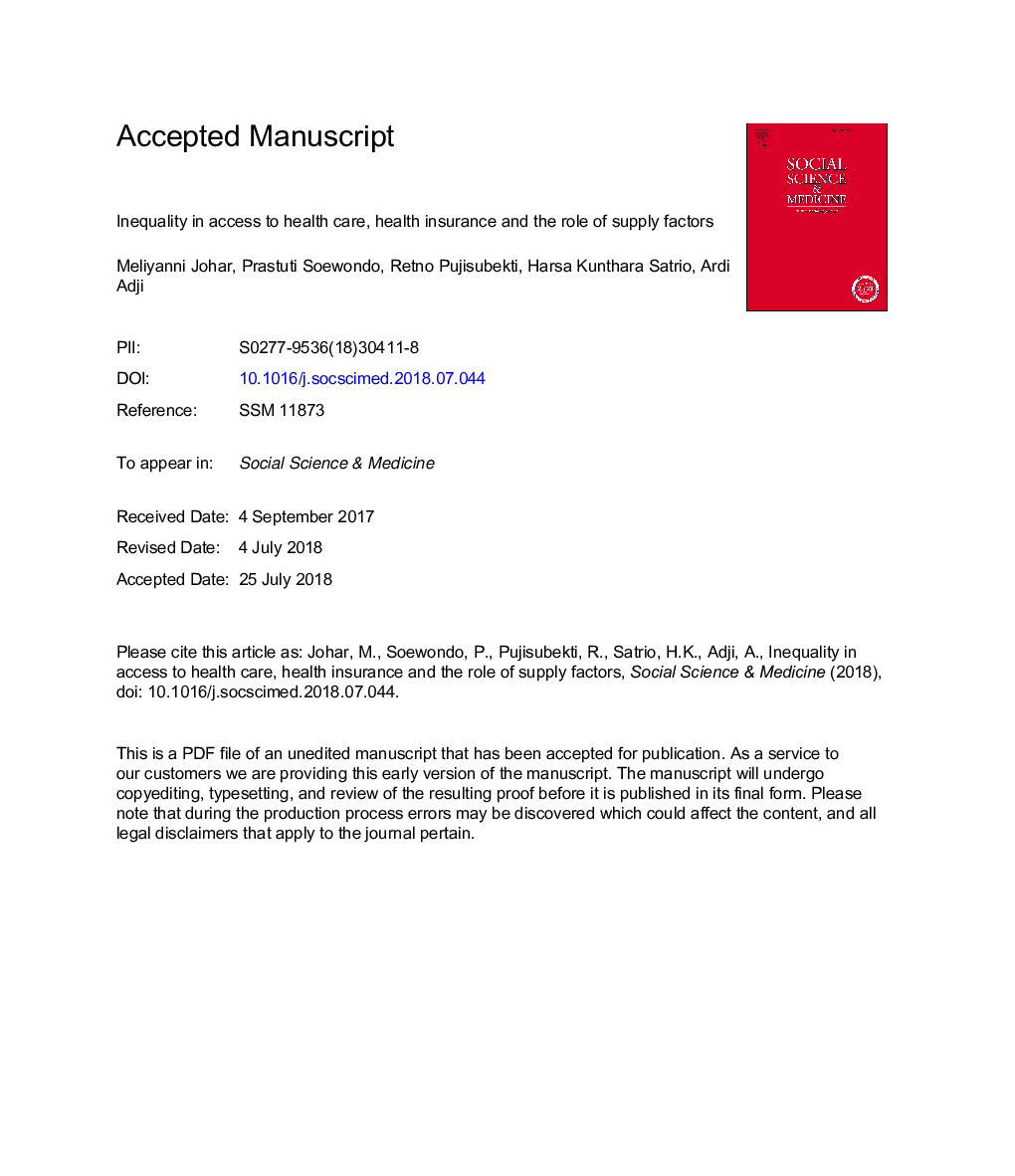| Article ID | Journal | Published Year | Pages | File Type |
|---|---|---|---|---|
| 7327211 | Social Science & Medicine | 2018 | 36 Pages |
Abstract
While disparities in access to health services by different economic groups have been well documented, much less is known about the factors that are contributing to these disparities. In this paper, we take the case of Indonesia, which has the six-worst wealth inequality in the world. The data is derived from the national socio-economic survey from 2011 to 2016, giving a total sample of over 5.5 million individuals. We find that only access to outpatient care at public primary health facilities is pro-poor, whilst access to other types of health care is pro-rich. Decomposition analysis demonstrates that the pro-rich access is driven by households' economic conditions, geographical variations, and supply-side factors that tend to disfavour the poor. Exploiting a nation-wide health insurance expansion during the study period, we go beyond most studies to examine how inequality in access and the contributions of these determinants may have changed under the new regime. We find that access gaps have narrowed, driven by a weaker association between access and households' economic status. Urban areas see a bigger reduction. Access to health services is generally greater, supported by increased participation of private providers under the new regime. However, we have yet to see a bigger reduction in the access gap due to more equal distribution of health infrastructure. Policies that may foster economic growth and increase households' economy, as well as health taskforce reallocation to reach greater number of poor and/or rural patients may reduce the inequality in access to health services further.
Related Topics
Health Sciences
Medicine and Dentistry
Public Health and Health Policy
Authors
Meliyanni Johar, Prastuti Soewondo, Retno Pujisubekti, Harsa Kunthara Satrio, Ardi Adji,
